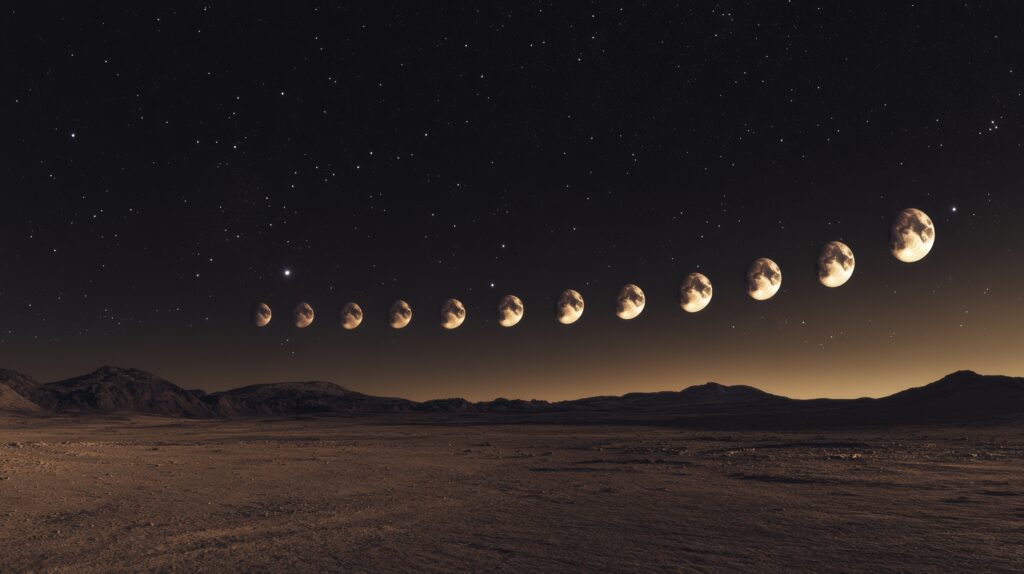The term “second moon“ often refers to hypothetical or temporary objects in space that orbit Earth alongside our main moon. Here are a few instances or interpretations of what “second moon” can mean:
From September 29 to November 25, astronomers predict that 2024 PT5, an object believed to be an asteroid and referred to as a “mini-moon,” will temporarily orbit Earth. Eventually, it will escape Earth’s gravitational pull and continue its journey through space.
Researchers Carlos de la Fuente Marcos and Raúl de la Fuente Marcos explained in their published study that Earth can frequently capture asteroids from the Near Earth Object (NEO) group, drawing them into orbit and turning them into “mini-moons.”
Table of Contents
1. Mini Moons or Temporarily Captured Objects
Earth occasionally captures small asteroids or space debris into its orbit, which can be considered “mini moons” or “temporary moons.” These are not permanent and usually stay in orbit for a short period before either crashing into Earth or escaping back into space. One such object was 2020 CD3, a small asteroid that orbited Earth for about three years before leaving Earth’s orbit in 2020.
2. Kamo’oalewa – The Quasi-Satellite
Kamo’oalewa is a near-Earth asteroid that has been described as Earth’s quasi-satellite. It follows a similar orbit around the Sun as Earth and occasionally appears close to our planet, earning the nickname of a “second moon.” However, it doesn’t orbit Earth in the same way as the Moon does.
3. Double Moon in Folklore
In some ancient cultures and folklore, a “second moon” refers to myths or legends describing two moons. However, no scientific evidence suggests Earth ever had two permanent moons.
In reality, Earth has only one natural satellite, the Moon, but various smaller objects can become temporary moons under specific gravitational circumstances.
FAQs
1. Is there a second moon on Earth?
No, Earth does not have a permanent second moon. However, Earth occasionally captures small asteroids or space debris into temporary orbits, which are sometimes referred to as “mini-moons.” These objects orbit for a limited time before escaping back into space.
2. Why do I see a second moon?
Seeing a “second moon” is likely an optical illusion caused by certain atmospheric conditions, such as refraction or reflection of light, or it could be due to a nearby celestial object, such as a bright planet like Venus, appearing close to the moon. There is no second permanent moon orbiting Earth.
3. Who is second in moon?
If this refers to human space exploration, the second person to walk on the Moon was Buzz Aldrin, following Neil Armstrong during the Apollo 11 mission in 1969.
4. What is the second new moon called?
The second new moon within a calendar month is referred to as a “Black Moon.” This is a rare occurrence, similar to the concept of a Blue Moon, which refers to the second full moon in a month.
